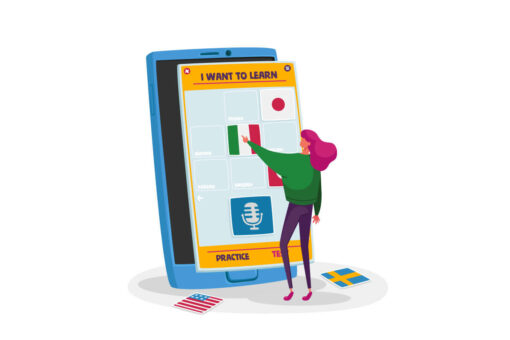6 Tips to Increase Student Engagement
In our digital age, engagement is a top priority when delivering online content.
Think about your own experience: how many times have you stopped watching a YouTube video midway because the presenter wasn’t getting to the point, or clicked on a recipe and scrolled through the writer’s long introduction to get to the actual recipe?
The evolution of smartphones means a wealth of content is always just a few taps away, providing a welcome distraction from that 5,000-word essay or online lecture. Whether you’re a lecturer, teacher or e-learning designer, it’s your job to make your learning content stand out from the vast amount of competition available online.
You may worry that creating videos or designing flashy interactive features is the only way to make engaging content, but this isn’t the case. Here are six tips anybody can follow to keep their learners engaged.
-
Keep it simple
When creating written content, it’s important to use language that’s clear and to the point. With academic content, it’s tempting to use a lot of specialist vocabulary and explain concepts in a highly detailed and nuanced way – especially when you’re writing about a topic you’ve been studying for years! It can be frustrating for learners, however, when they have to read a sentence several times to fully grasp its meaning.

Instead, put yourself in the learner’s shoes: if you were approaching this topic for the first time, what’s the simplest possible way it could be explained to you? Can you think of any analogies that will help learners to visualise the concept? You can build on this with more nuance later, but start by explaining concepts in terms that all learners can easily understand.
-
Include real life examples or stories
When reading e-learning content, learners are often thinking: how does this work in the real world, and why does it matter to me?
Sharing real-life examples helps learners to understand what they’re learning, but also why they’re learning it. In other words, they will see how theories and concepts apply in real life scenarios that they may encounter.

For example, if you’re a marketing lecturer sharing a theory with students, can you think of any well-known brands that illustrate this theory? Or have you applied it yourself in the workplace before? Share this story. Remember, many younger learners haven’t worked in an office before, so real-life examples are really important for them.
-
Lighten Up
E-learning content doesn’t have to be lofty and serious all the time, and adding some humour and liveliness to your subject doesn’t necessarily diminish its credibility. Are you passionate about the subject you teach? Let that be reflected in the learning! If you feel bored creating the content, it’s probable that learners will feel bored reading it too.

This doesn’t mean you should feel pressure to make your content laugh-out-loud funny! E-learners often say they miss the social element of learning in a classroom, so injecting some warmth and personality into your writing – for example, by adding the odd pun or anecdote – will help them feel they’re being spoken to by a real person.
-
Tell a story
Over the last year especially, many of us have spent a lot of time streaming content on platforms such as Netflix and have become accustomed to getting swept up in a great story that means we can’t help watching just one more episode.

It may be a tall order for your e-learning to be as addictive as the latest Netflix thriller, but telling a story through your e-learning is important to keep learners engaged. Structure your content in a way that means each sub-topic leads on naturally to the next; if the sub-topics feel disjointed and randomly ordered, learners will have less motivation to keep going. Consider ending each section with a key question that will be answered in the next section. You could also use a single case study which develops throughout the course, applying each new concept.
-
Break up your content
Think back to the example of YouTube. Are you more likely to watch a video that’s 25 minutes long, or one that’s 5 minutes long? The popularity of social media websites like Twitter has made us accustomed to receiving content in bitesize chunks.

Of course, your e-learning content can be more comprehensive than a tweet, but try to break it down into sections and subsections as much as possible to make it easier to digest. In the Ryze app, our micro-lessons are generally fewer than 1,000 words, with paragraphs of 50-100 words. We also try to ensure every micro-lesson has several images and at least one element such as a quiz question, reflection question, video or case study to create variety.
-
Get the learner involved
One important way to increase engagement is to make students feel they’re actively involved in learning rather than passively absorbing information. If you’re able to add interactive activities such as quizzes, flashcards or even games to your content, fantastic! If you don’t have the ability to do this, however, there are still simple ways you can involve learners.

For example, you can use reflection questions that encourage learners to think about their personal experience, or critical thinking questions that ask them to critique concepts. Simple activities are also effective: using the marketing example above, you could get students to think of a favourite brand in relation to the concept being taught and could even ask them to share ideas with each other via email, a message board or a tool such as Padlet.
Other articles

6th Oct, 2021
Blended learning for languages can boost student engagement
Blended Learning: What Is It? As the name suggests, blended learning blends different learning methods. Essentially, blended learning combines traditional in-classroom teaching/learning with technology-based self-study outside of the classroom. The second part of the blended learning approach, the technology-based e-learning component, can offer real support for language learning. The internet has a wealth of resources, […]

13th Sep, 2021
ESTU + Studious - new partnership!
We are delighted to announce Estu+Studious: a new partnership with ESTU as part of our new corporate services development. Working with Simon Littlewood and Karl Eddy of Estu, Studious will deliver tailored learning solutions available for use in Apprenticeship Levy schemes to major corporations. The content delivered by Studious will be suitable for Learning […]

4th Aug, 2021
Tone of voice: what is yours?
How to use the top brands’ comms tactic to engage students with your online educational content Fast forward to September 2021: after weeks spent preparing classes, creating activities, developing quizzes and choosing case studies, you still have more videos and microphones turned off during your online lecture than you would like. How can […]

